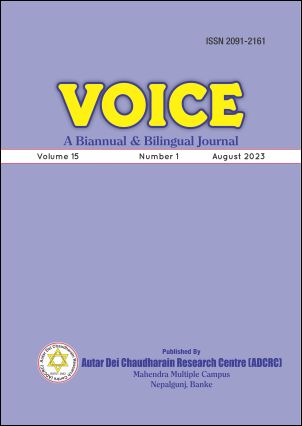Input Crisis in the Agricultural Sector of Nepal
DOI:
https://doi.org/10.3126/voice.v15i1.58020Keywords:
Agricultural input, Crisis, FinanceAbstract
Amidst 21st century when agriculture is cherished with advancement in all kind of technology backed by multifarious dimensions of research and innovation internationally, the mainstay sector of Nepal still remains darker. Poverty, hunger and food deprivation have become common characteristics of the peasantry and the sector remains at a very marginal level in its productivity and total product. Import of agricultural product of millions of worth has become destiny of the country. In this line crisis in agricultural input supply is found as a major determinant. Precisely by inputs we mean essential commodities as chemical fertilizers (urea, potash and DAP), agricultural tools and machines, improved seeds and saplings, agricultural finance. As per provisions of such inputs Nepal is found weaker in almost all segments of procurement. The country still doesn’t have any chemical fertilizer production unit of its own. Vast and diverse areas of agricultural land are still far from irrigation catchment. Breeding of improved seeds by modern aerobiological means is still under progress and very less is achieved compared to the desired target. Agricultural tools and machine production inside the country is still at nascent stage. Agricultural finance still falls under policy and implement question. The country relies heavily on neighboring countries for the supply of such inputs through formal and informal channels that would raise the question over food security and sovereignty as well. Therefore, to make efficient, reliable and sufficient provisions of agricultural input to the agriculture sector of Nepal is a crucial need of the day.
Downloads
Downloads
Published
How to Cite
Issue
Section
License
Copyright (c) 2023 Avnindra Dutt Mishra

This work is licensed under a Creative Commons Attribution-NonCommercial 4.0 International License.
CC BY-NC: This license allows reusers to distribute, remix, adapt, and build upon the material in any medium or format for noncommercial purposes only, and only so long as attribution is given to the creator.




